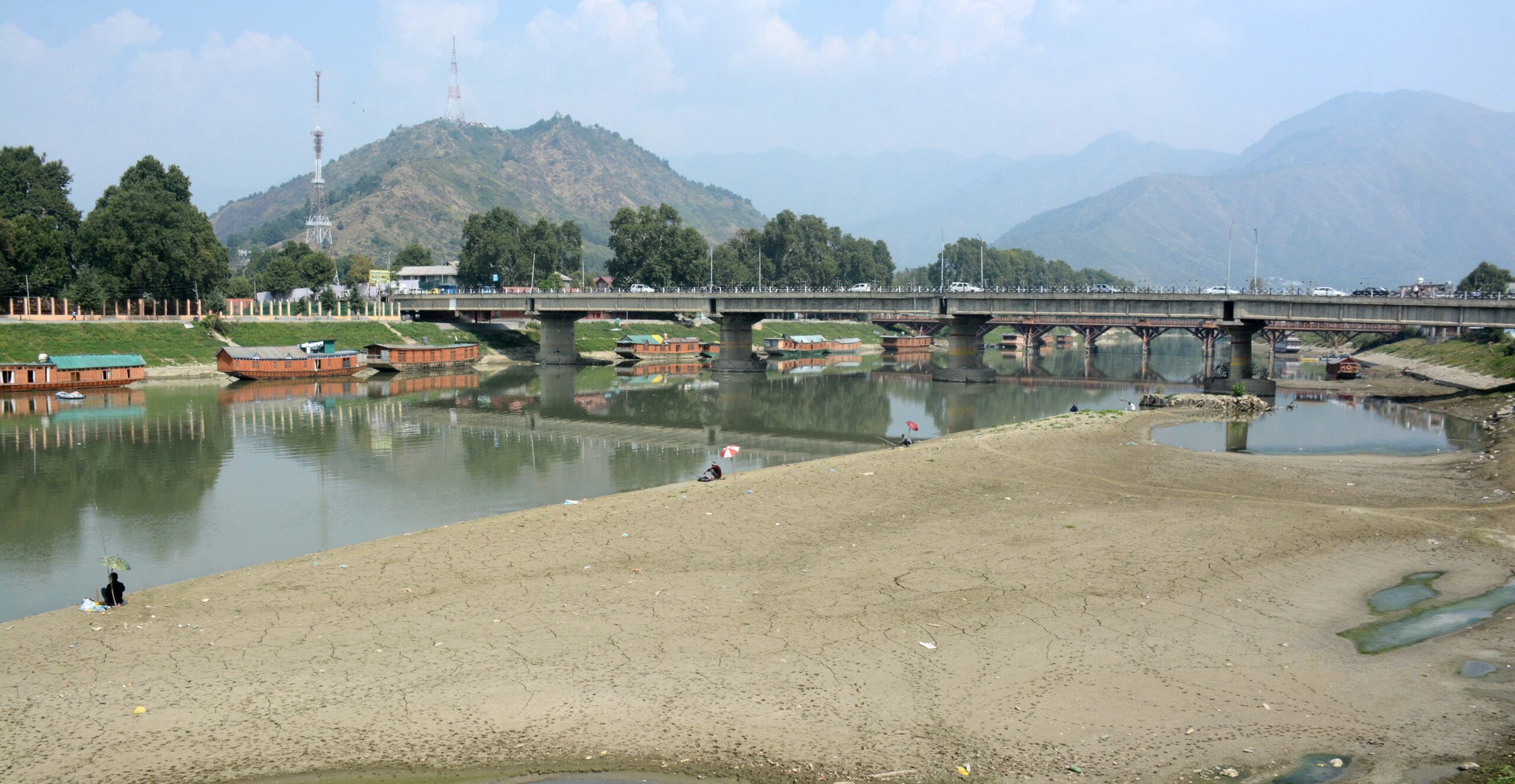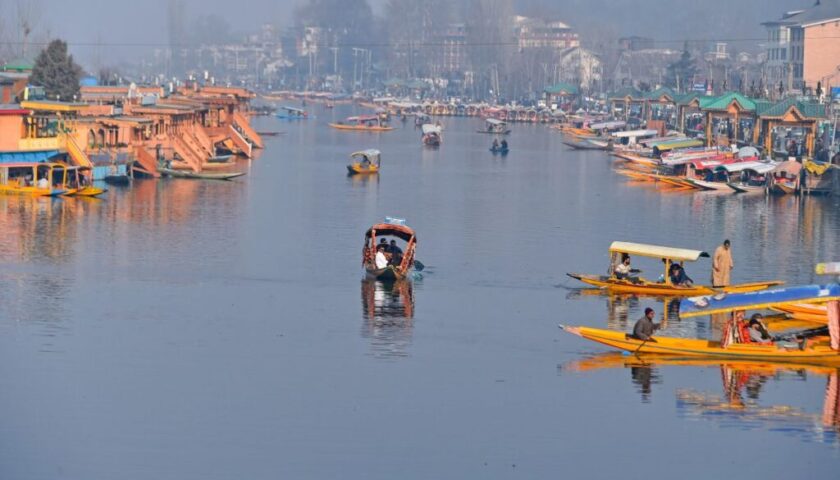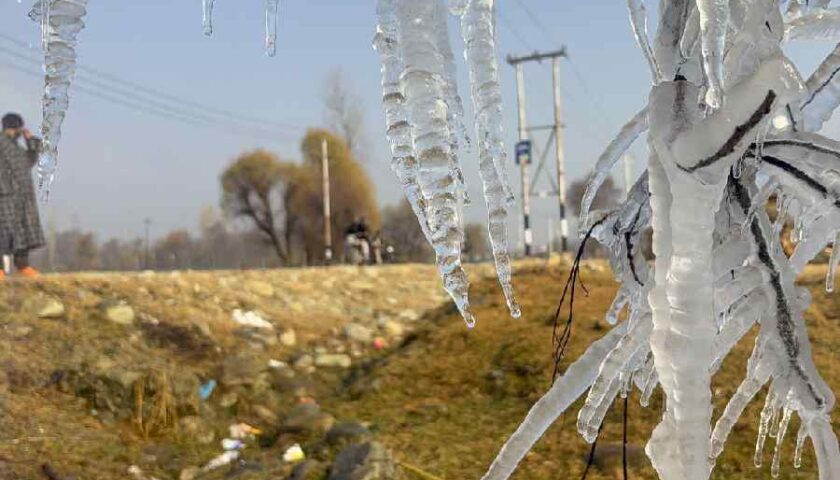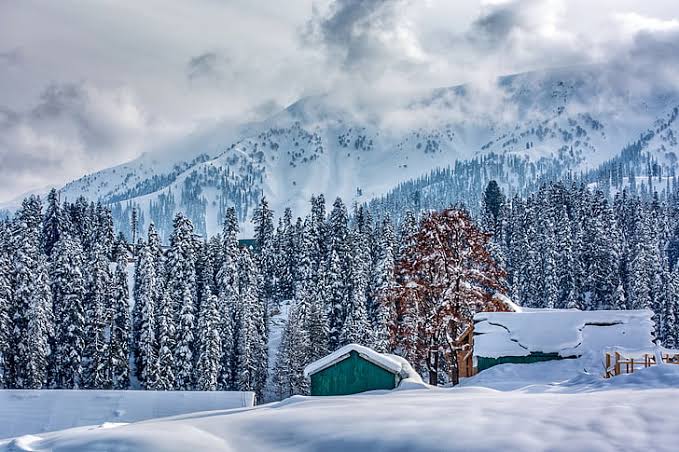The Silent Crisis Brewing in Kashmir
Javid Amin
Srinagar 18 April 2025: For generations, the beauty of Kashmir has been defined by its pristine snowy winters, glistening glaciers, and crystal-clear rivers flowing through its valleys. But behind the postcard-perfect scenery lies an unfolding ecological crisis that threatens the lifeline of millions: water. The winter of 2024-25 brought alarmingly low snowfall to the region, leaving experts, farmers, and policymakers deeply concerned.
This reduction in snow cover is not just a seasonal anomaly but a sign of a larger, long-term threat to Kashmir’s water security. In this article, we delve into the implications of this environmental shift, speaking to experts and locals, examining the scientific data, and exploring potential solutions for Kashmir’s looming water crisis.
01: Understanding Kashmir’s Water Dependency on Snowfall
Snowfall is not merely a winter wonder for Kashmir; it is the region’s natural reservoir. As temperatures rise during the spring and early summer months, snowmelt feeds the rivers, fills irrigation canals, and replenishes underground aquifers, supporting agriculture and human consumption.
Kashmir’s snow-fed rivers, including the Jhelum, Lidder, and Sindh, are essential for irrigating apple orchards, paddy fields, and saffron farms. Snowfall also helps recharge the water tables that sustain drinking water supplies in towns and villages across the region. Any disruption to this cycle has immediate and severe consequences.
02: Glacier Retreat & Accelerated Melting
Dr. Irfan Rashid, a leading researcher at the University of Kashmir, has raised an urgent alarm over the dual impact of low snowfall and rising temperatures. Reduced snow cover leaves glaciers more exposed to sunlight, accelerating their melt rate. This creates a dangerous feedback loop: the less snow there is, the faster the glaciers shrink, further reducing long-term water storage.
Glaciers are the slow-drip banks of Kashmir’s water system, releasing water gradually over the summer. Their premature retreat could lead to initial floods followed by severe water shortages in the later months.
03: Irrigation & Drinking Water at Risk
Water from snowmelt is essential for the livelihoods of Kashmir’s farming communities, who cultivate apples, walnuts, cherries, rice, and vegetables. A decrease in snowfall directly threatens these sectors, which are not only economically vital but form the backbone of Kashmir’s rural society.
Drinking water shortages are an even graver concern. In cities like Srinagar, Baramulla, and Anantnag, the municipal water supply relies heavily on snow-fed rivers and streams. With lower snow reserves, the availability of safe drinking water during peak summer could become critically limited.
04: Climate Change and Rising Temperatures in Kashmir
Long-term meteorological data paints a concerning picture: Kashmir is warming faster than the global average. According to a decade’s worth of temperature analysis, winters have become shorter, snowfall has become less predictable, and unseasonal rainfall events are more frequent.
This changing climate pattern is creating an unstable water supply system, making both droughts and floods more likely. The ongoing warming trend is also changing the nature of precipitation, with rain increasingly replacing snow at higher altitudes.
05: The Rainfall Gamble
As winter ends, hope hinges on a sufficiently wet spring. The region’s Irrigation and Flood Control Department has indicated that the current water levels are stable but warn that insufficient rainfall in the coming months could push Kashmir into a full-blown water crisis.
Relying on rain is a risky proposition. In recent years, the region has witnessed both flash floods and prolonged dry spells, underscoring the increasing volatility of the climate. Without reliable snowfall, Kashmir’s ecosystems and human communities are exposed to unprecedented risks.
06: What Can Be Done? Sustainable Water Management for Kashmir
The crisis also offers an opportunity: to rethink water management strategies. Sustainable water management practices could help mitigate the effects of snow shortage and unpredictable rainfall.
Some solutions include:
- Encouraging rainwater harvesting in both urban and rural homes
- Improving water storage infrastructure
- Introducing smart irrigation systems for agriculture
- Preventing water wastage through leak-proof municipal pipelines
Long-term solutions must integrate scientific monitoring, community engagement, and policy reforms to create resilience against future climate shocks.
07: Policy Recommendations and Scientific Innovations
Policymakers must move beyond seasonal responses and embrace long-term climate adaptation strategies. This includes:
- Developing real-time glacier and snowpack monitoring systems
- Implementing water rationing plans during dry years
- Incentivizing the use of water-efficient appliances
- Collaborating with global environmental bodies for technical support
The integration of AI and remote sensing could revolutionize the region’s ability to predict and adapt to water shortages, minimizing human and ecological losses.
08: Voices from the Ground — Farmers, Residents, and Experts Speak
Interviews with local farmers in Pulwama, Anantnag, and Shopian reveal the human face of this crisis. Many report worrying signs: springs drying earlier in the season, decreased yields, and growing reliance on diesel-powered water pumps.
Residents of Srinagar share their anxieties about intermittent water supply in summer, and some have already started storing water in advance during the spring.
Experts stress the need for widespread public awareness about the links between snowfall, water security, and climate change, urging both individual and collective action.
09: The Way Forward: Adapt, Prepare, and Act
Kashmir’s water challenges are not isolated. Similar patterns are emerging across the Himalayas, from Ladakh to Nepal. Collective action — from personal conservation to international cooperation — is essential.
Key steps include:
- Strengthening regional climate change monitoring
- Diversifying water sources
- Educating communities on conservation techniques
- Institutionalizing sustainable farming practices
Bottom-Line
The water crisis brought on by low snowfall is a wake-up call for Kashmir, highlighting the urgent need for climate adaptation and water conservation. From policymakers to residents, everyone has a role to play in securing the region’s water future.
The melting glaciers, shrinking snow cover, and warming winters are a stark reminder: nature’s balance cannot be ignored. But with collective awareness and action, Kashmir can chart a sustainable path forward.




